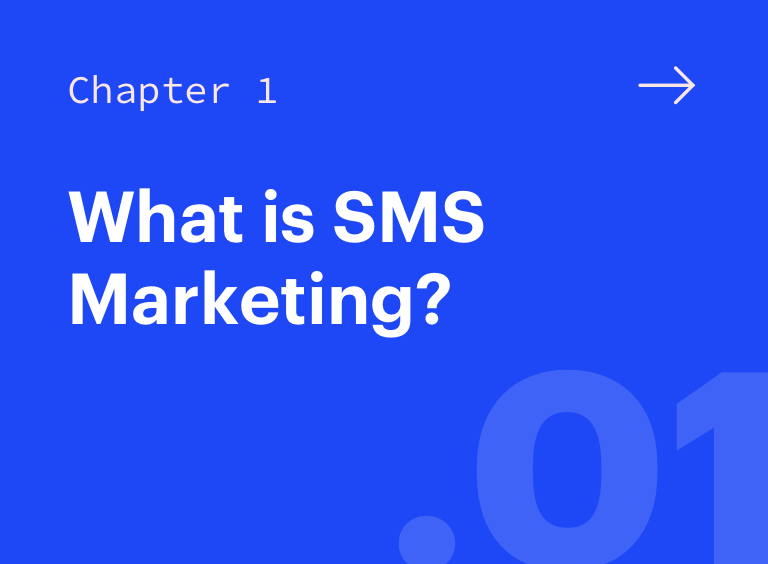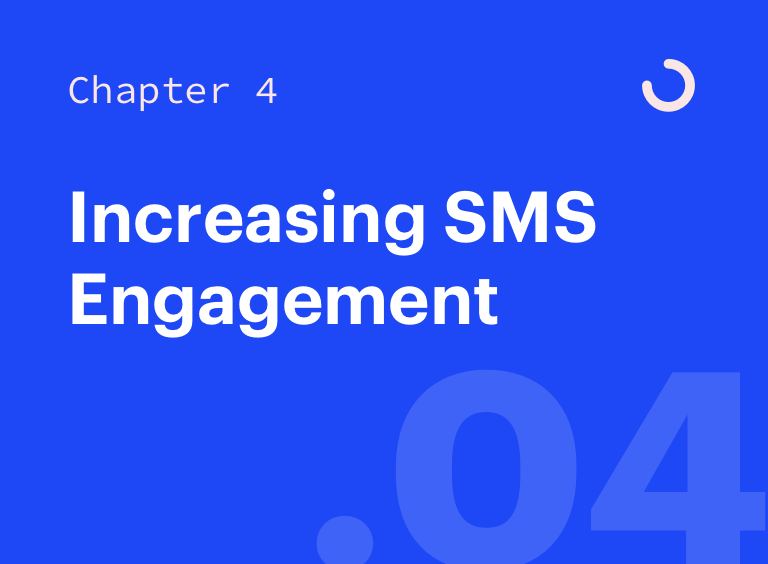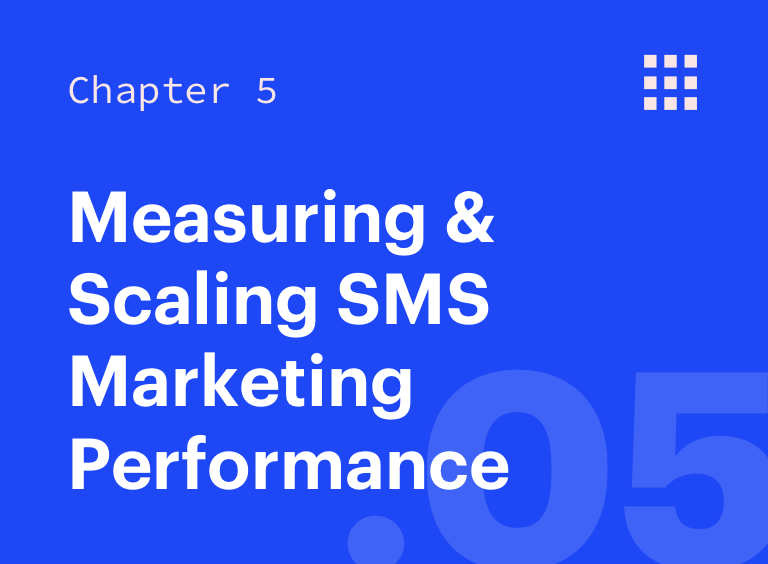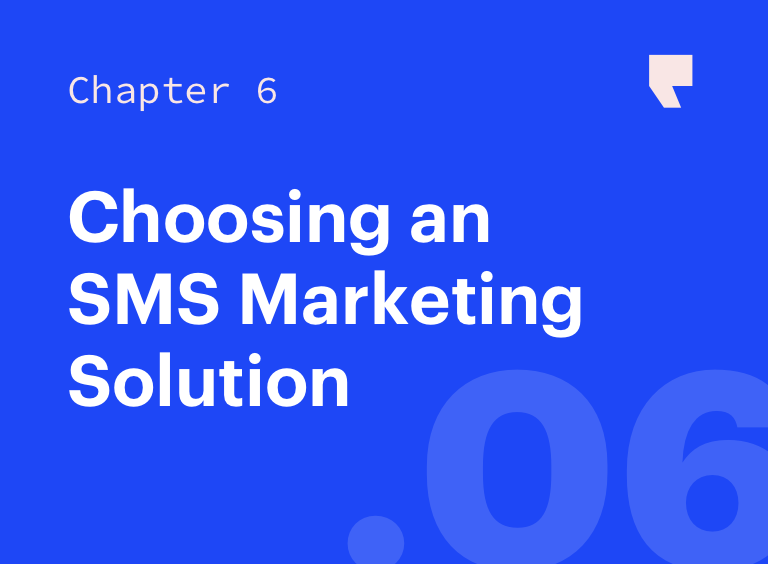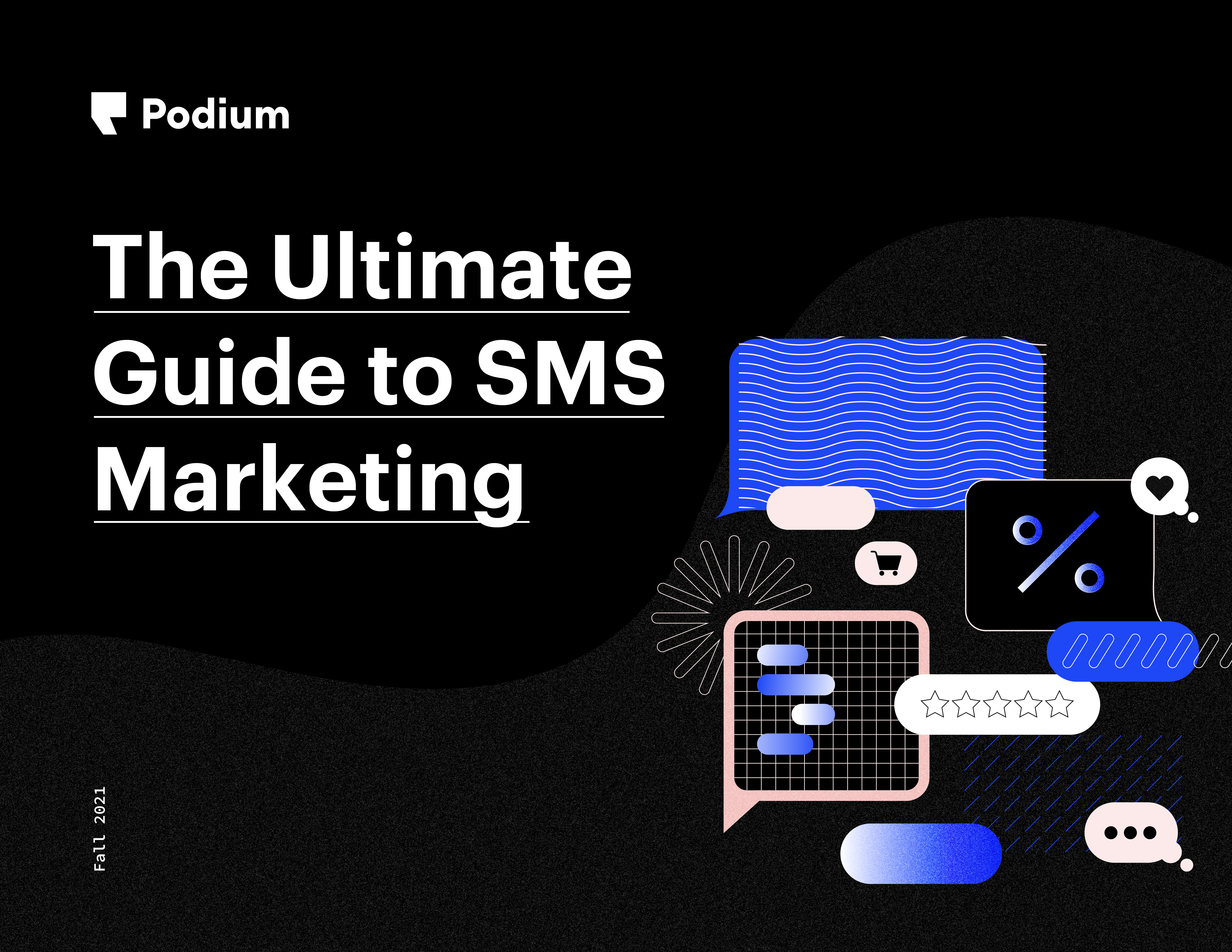
The Ultimate Guide To SMS marketing
What is SMS Marketing?
Text has taken over. And used correctly, it can be your most effective marketing tool by increasing convenience, strengthening relationships, and getting your promotions seen. Read on to learn:
- What terms you need to know
- What makes SMS marketing different from email marketing
- Why SMS marketing is so effective
What is SMS Marketing?
With 3.8 billion smartphone users across the planet and 95% of texts being opened within 3 min, it’s easy to see that text has taken over. And local businesses have picked up on it.
SMS marketing is the practice of using text messages to convert leads and keep customers engaged. As a rule of thumb, text messages are usually 160 characters or less and require prior permission from your customers to send.
These text messages may include a number of multimedia elements such as pictures, videos, GIFs, and links, and senders must abide by their country’s rules and regulations, as well as those of the recipient.
Local businesses sometimes worry that SMS marketing software is too complicated to implement or that promotions can frustrate customers and damage their relationships with them. However, with the right practices and information, SMS marketing can be a huge asset and revenue driver.
Done correctly, SMS marketing can actually strengthen relationships by inviting responses. With well-timed messages and relevant content, it feels more intimate than other marketing messages and encourages continued engagement in a way only text can. The key is knowing how to message the right way.

Bulk messaging vs SMS marketing
Bulk messaging is the distribution of large numbers of text messages for delivery to mobile phones. It often takes the form of one-way blasts and has traditionally been a less personal form of communication. And if it’s intended as marketing, it may not be compliant by local regulations if individuals haven’t opted in to receive the messages. SMS marketing, on the other hand, involves sending personalized promotional or transactional messages for marketing purposes via text message. It centers around taking an individual approach to each customer.
In this guide, we will be focusing on SMS marketing. This will include how to make mass text messages into valuable, personalized communications, encouraging responses and continued conversation.
Transactional text messages vs. promotional text messages
Transactional messages are operational in nature and sent in response to a customer’s interaction with your business or service. They can include payment invoices, shipping notifications, and response to support texts initiated by the customer. For example, you might receive delivery notifications from your driver through SMS if you order dinner through an app. These messages pertain specifically to your order’s status and are part of the transaction.
Promotional messages communicate promotions. The most obvious example of these are texts that include coupon codes, specials, or discounts. But promotional messages might also include business updates that aren’t directly related to a customer’s interaction with your business—for example, an announcement about a new location, extended hours, or an upcoming customer event.
You can create SMS marketing campaigns for all of these types of promotional messages. And adhering to promotional best practices is a good decision when in doubt about the nature of your message.
Glossary
SMS marketing has its own set of terms and phrases that are commonly used and easy to understand. In case you are new to this type of marketing, here is a list of some general terms and definitions to help you get started.
SHORT MESSAGE SERVICE (SMS) | Short message service: text without media.
MULTIMEDIA MESSAGING SERVICE (MMS) | Text messages that include pictures, videos, GIFs, links, etc.
SMS KEYWORD | Words or phrases customers text your business to opt-in to text marketing messages from your brand.
CALL TO ACTION (CTA) | The desired action you want your target audience to do after receiving a marketing message; should clearly articulate the next step: reply back, shop our inventory, stop by, give us a call, etc.
CLICK-THROUGH RATE (CTR) | Percentage of SMS marketing recipients who respond to the CTA.
CONVERSION RATE | Percentage of SMS receivers who respond to the CTA.
OPT-IN | (vb) Giving express consent for a business or entity to text you (n) A customer who has opted in.
OPT-OUT RATE/UNSUBSCRIBER RATE | Percentage of subscribers who opt out of receiving texts from your business.
TELEPHONE CONSUMER PROTECTION ACT (TCPA) | A US federal law regulating certain types of phone calls and text messages; other countries often have similar regulations.
QUICK RESPONSE CODE (QR CODE) | An image that users can scan with their mobile cameras that can direct them to your SMS marketing sign-up page. Quick response codes can be printed or displayed digitally, making them ideal for gathering opt-ins in-store, online, or face-to-face.
TEXTING SERVICE SOFTWARE | A messaging platform that allows you to effectively manage campaigns, conversations, and opt-ins.
SHORT CODE | A standard 5-6 digit number used to send MMS or SMS messages. Short codes are typically more expensive than long codes ($500+ per month), take longer to procure, and are typically used for one-way bulk texting.
LONG CODE | A standard 10 digit number used to send SMS and MMS messages, or place calls. Long codes are advantageous in SMS marketing because messages look like they are coming from a person and not from an automated system.
PERSONALIZATION VARIABLE | Dynamic fields that pull specific information into SMS marketing messages to tailor them to each contact. Some examples include the contact’s first name or the location name where the offer is made available.
With the right tools, SMS marketing can be hugely rewarding for businesses of any type and size. Read on to learn best practices, how to message compliantly, and how to craft the type of copy that gets a response.
Why SMS Marketing?
As a consumer yourself, you’re aware of just how much consumers are inundated with marketing materials every day. This has consequences, which include desensitization. Research has shown that consumers aren’t as receptive to traditional marketing methods as they used to be.
Local businesses need new ways to contact customers in a way that’s personal and provides real value to them. And with our catalyzed digital transformation, consumers expect a modern customer experience with communication that meets them where they are. They expect convenience, personalization, and real connection. That’s where text messaging comes in.
Text messages have an open rate of up to 98%. On average, 95% of messages are opened within 3 min.
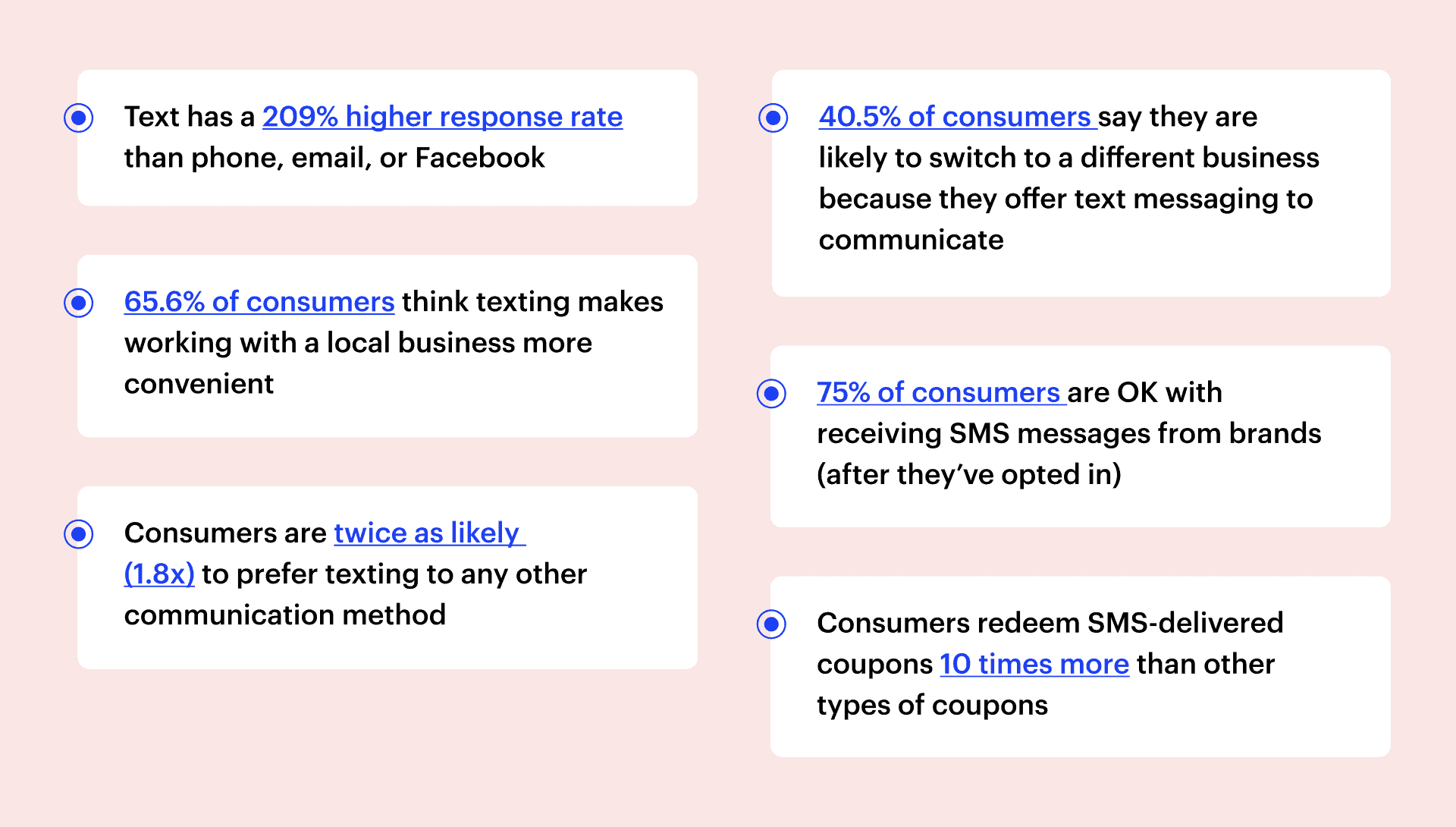
Text can be your most effective marketing option
You may notice that the majority of consumers still interact with businesses through channels such as phone call or email. That’s true. But it’s only because they think that’s how local businesses are set up to interact. Nearly 67% actually think being able to text businesses would increase convenience.
Think about it: if you’re still playing phone tag or emailing, but 98% of your customers check every text the same day you send it, there’s a huge opportunity to get ahead by text messaging that far surpasses the potential of any other medium.
The fact of the matter is that local businesses are uniquely positioned to win with SMS marketing. According to the 2021 Local Business Messaging Trends report, local businesses are situated to reach their consumers’ text messages inboxes more often than major chains and ecommerce players.
Consumers are 21% more likely to opt-in to local businesses’ text promotions over major chain or big-box retailers. And they’re 45% more likely to opt-in over online or ecommerce businesses.
Local businesses have an implied trust with consumers that they can use to collect opt-ins and then strengthen with well-timed, personalized promotions. This leads to higher loyalty, more business, and more revenue.
SMS marketing is also one of the most cost-effective campaigns you can run as a local business. Compared to other digital campaigns, SMS campaigns are extremely low-cost to run, allowing you to engage new leads and increase customer lifetime value at very little cost. Recent data also shows that providing options such as text directly increases a local business’s revenue.
SMS marketing vs email marketing
Like email campaigning, SMS marketing uses a list of contacts you have created and is trackable and provides valuable insights into customer behavior. But unlike email campaigning, it reaches customers where they want to be reached instantly.
While the average open rate for emails is 18%, engagement is extremely low. On average, email only sees a click-through rate of 2.6% and a click-to-open rate of 14.1%. With up to a 98% open rate, text continuously blows email out of the water.

The final reason SMS marketing should be your top marketing choice? It’s the future. And it’s make or break.
40.5% of customers report being “likely” or “very likely” to switch to a different business because they offer text messaging to communicate. In terms of communication evolution, people have always gravitated toward two key components—convenience and speed. With these factors in mind, messaging has become the inevitable next step when it comes to connecting with your customers.
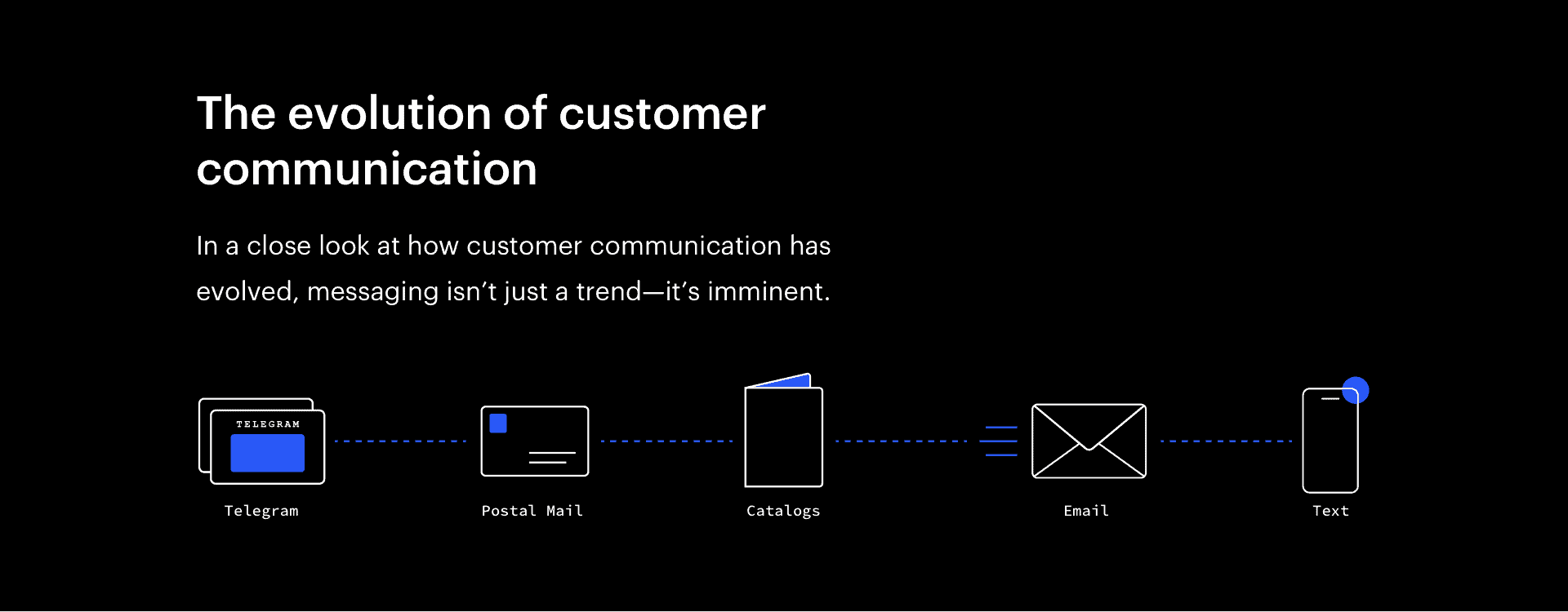
IMPORTANT DISCLAIMER: This guide is for informational purposes only. It is not intended as legal advice or a comprehensive summary of the law. You are encouraged to retain your own legal counsel to review this guide and assess your unique text messaging business scenario. In addition, a business can do many things, including use of the Podium system outside its intended use, which can give rise to liabilities beyond those addressed in this guide.
